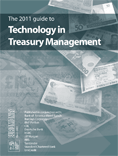 |
|
| The 2011 guide to Technology in Treasury Management |
 |
|
|
Mike Edwards, director, head of market management, EMEA, Global Treasury Solutions, Bank of America Merrill Lynch |
Long before the financial crisis, the world was familiar with the demands of conducting business globally. Contending with time zones, differing regulations and jurisdictions, managing conflicting approaches to business standards, and understanding evolving technology have been increasing challenges for years. What events of recent years have highlighted however is the fragility of a company’s position when it does not have a single, snapshot view of where its money is located.
Thanks for your interest in Euromoney!
To unlock this article, enter your e-mail to log in or enquire about access:




